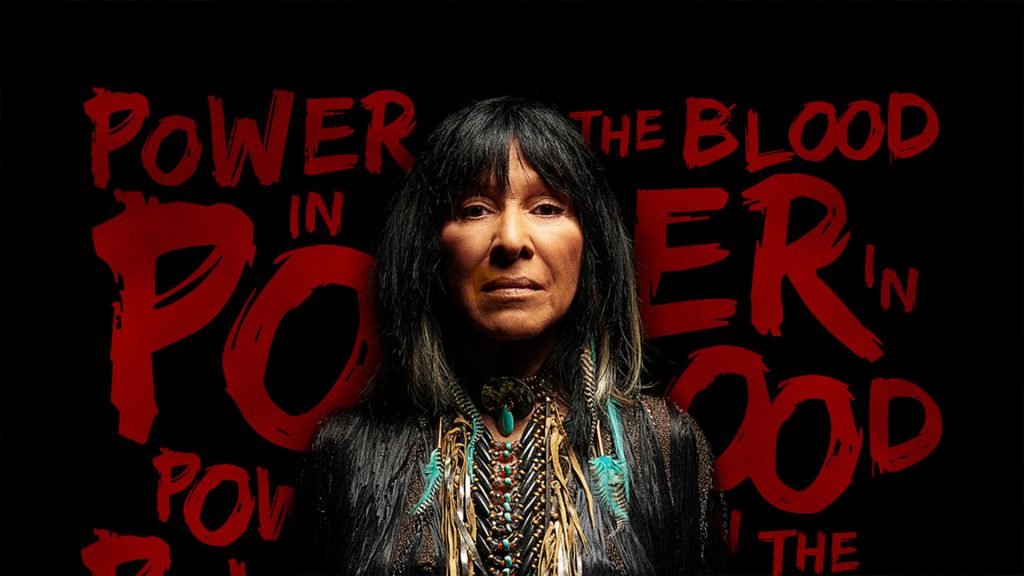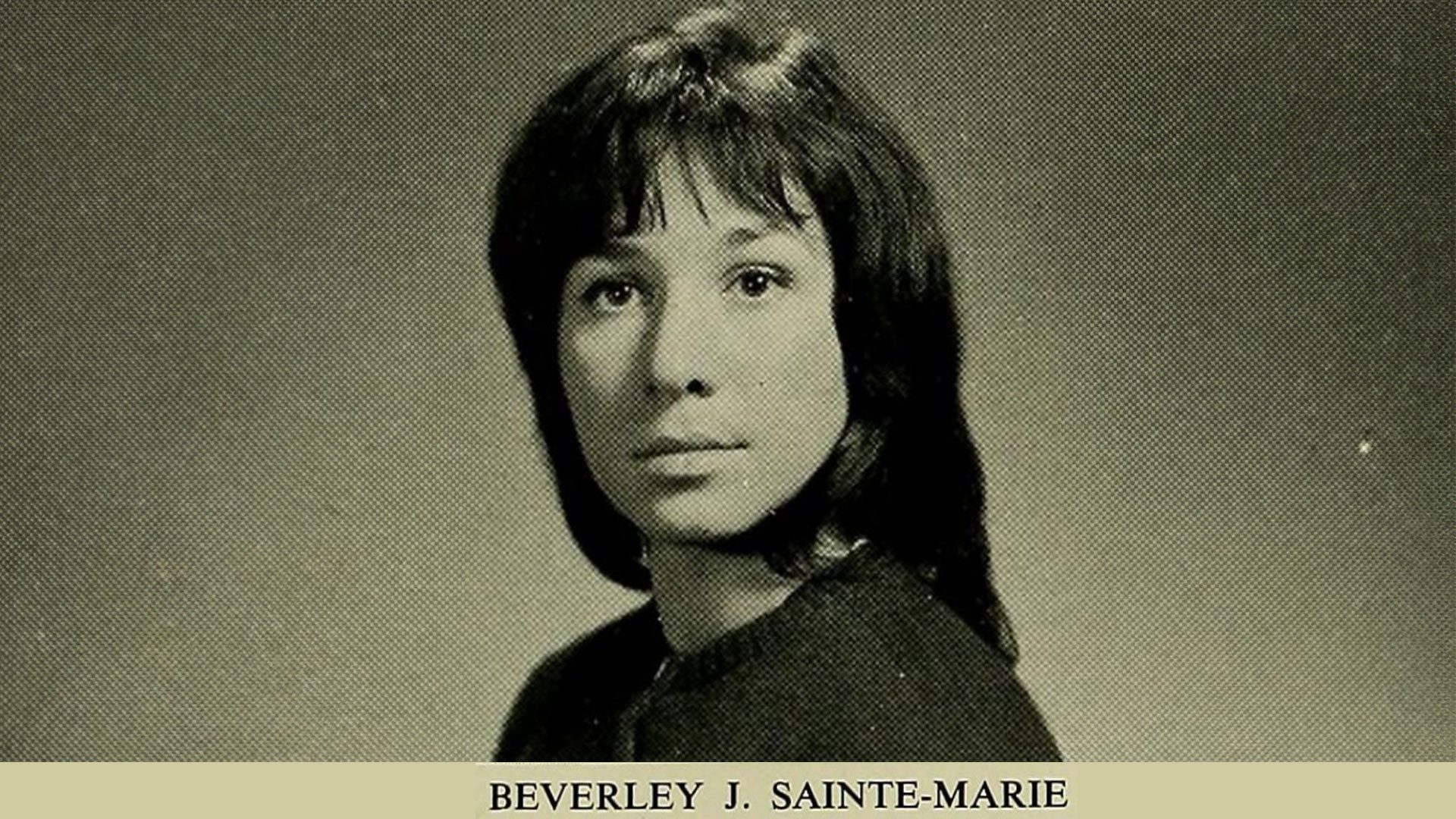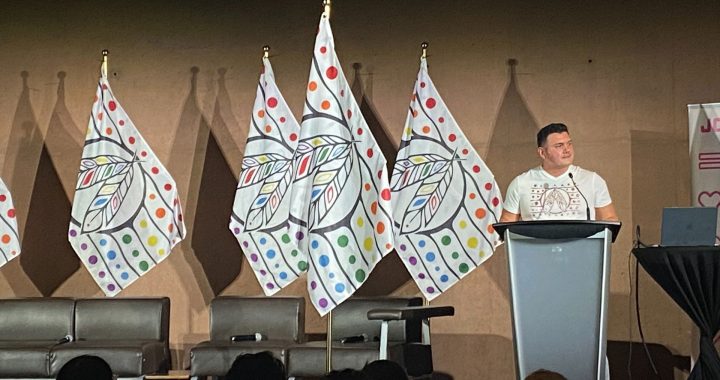
Buffy Sainte-Marie has issued a video and written statement ahead of a documentary that is expected to question her Cree ancestry.
World-renowned singer-songwriter Buffy Sainte-Marie is releasing information about her past ahead of a scheduled CBC documentary that is expected to question her Cree ancestry.
Sainte-Marie’s publicist reached out to APTN News offering the information on Wednesday.
The CBC’s The Fifth Estate describes their upcoming “Making an Icon” episode this way: “An icon’s claims to Indigenous ancestry are being called into question by family members and an investigation that included genealogical documentation, historical research and personal accounts.”
In anticipation of the documentary, Sainte-Marie posted a written and video statement online.
“For 60 years I’ve been sharing my story as I know it,” says Sainte-Marie in a video statement. “I count myself lucky to have two families, my growing up family, who are wonderful, and my Piapot family, who are also wonderful. But there are also many things I don’t know.”
That’s not new. In a 2018 authorized biography, Sainte-Marie is quoted as saying “… we never have known.”
In her statement, the singer-songwriter says she is traumatized by the questions about her Indigenous ancestry.
“To relive those times, and revisit questions I made peace with decades ago, has been beyond traumatic,” she wrote. “What I know about my Indigenous ancestry I learned from my growing up mother [Winifred Sainte-Marie], who was part Mi’kmaq, and my own research later in life. My mother told me many things, including that I was adopted and that I was Native, but there was no documentation as was common for Indigenous children born in the 1940s.”
Her online bio says, “Buffy Sainte-Marie is believed to have been born in 1941 on the Piapot First Nation reserve in Saskatchewan and taken from her biological parents when she was an infant.” She was then “adopted by a visibly white couple and raised in Maine and Massachusetts.”
In her statement to the media, Sainte-Marie adds: “Later in my life, as an adult, she [Winifred Sainte-Marie] told me some things I have never shared out of respect for her that I hate sharing now, that I may have been born on ‘the wrong side of the blanket.’ This was her story to tell, not mine.”
My Truth As I know it – Buffy pic.twitter.com/CZjBMOcKP9
— Buffy Sainte-Marie (@BuffySteMarie) October 26, 2023
The term “wrong side of the blanket” is an old expression meaning someone who was conceived out of wedlock or as a result of adultery. It is unclear if Sainte-Marie is implying that she was born out of wedlock to her purported biological mother in Piapot, or to the woman who raised her, Winifred Sainte-Marie.
APTN News has asked for clarification, a publicist working for Sainte-Marie wrote back saying “Buffy says her mother told her many things, and she does not know for certain which is the case.” Sainte-Marie also declined to be interviewed for this story, despite providing information to APTN.
Some of the questions regarding Sainte-Marie’s identity stem from a Massachusetts birth certificate for Beverly Jean Santamaria, a certified copy of which APTN has obtained. The birth certificate has the same birthdate of Buffy Sainte-Marie, the same given name for Buffy (Beverly Jean), as well as the same given names of the parents who raised her (Winifred and Albert).
APTN has asked the publicist of Buffy Sainte-Marie for a statement on Beverly Jean Santamaria’s U.S. birth certificate. They would neither confirm nor deny that it was her birth certificate, but instead wrote “…these kinds of documents cannot be relied upon as a basis for the claims against Buffy.”
There are also obvious similarities between the family names “Santamaria” and “Sainte-Marie.” The birth certificate also lists North Reading Massachusetts, one of the towns that Sainte-Marie says she grew up in in the biography, “Buffy Sainte-Marie: The Authorized Biography” by Andrea Warner.
In another biography, 2012 It’s My Way by Blair Stonechild, Buffy’s sister is quoted as saying that the Santamaria family became “St. Marie” because of “anti-Italian prejudice” after the Second World War.
Meanwhile, in the authorized biography, Warner writes that Buffy Sainte-Marie’s origin story took a turn in the early 1960s while in Toronto playing shows and spending time at the Friendship Centre.
There Sainte-Marie told [Elizabeth] Samson and [Wilfred] Pelletier that she had been born to an Indigenous family in Saskatchewan. Samson and Pelletier believed that she could be the daughter of their friend Emile Piapot, the grandson of Chief Piapot of the Piapot reserve in Saskatchewan, and his wife Clara Starblanket, daughter of the famed Chief Star Blanket [sic] of the File Hills Reserve in Saskatchewan’s Qu’Appelle Valley. Emile and Clara had reportedly had a daughter taken from the reserve around the time Sainte-Marie was born.
But this account is different from the material that Buffy Sainte-Marie’s publicist has provided APTN for this story.
In the late 70s and early 80s, Sainte-Marie hired Cree lawyer Delia Opekokew to research her history “for the purposes of assessing her rights to Indian status and Canadian citizenship,” according to an affidavit signed by Opekokew and provided to APTN by Sainte-Marie’s publicist.
In the affidavit, Opekokew writes that her research in Piapot unearthed oral history that says Sainte-Marie “…was born north of Piapot to a single woman who could not care for her, and that she gave Buffy as a baby to an American family who happened to be in the Piapot area.”
Opekokew also adds: “There was consistency in the witnesses to Buffy Sainte-Marie’s identity. The oral history is therefore trustworthy.”
The affidavit also briefly touches on the subject of a birth certificate.
“At no point during my investigation did I form any knowledge or belief that Buffy Sainte-Marie’s birth certificate from the United States was a representation of Buffy Sainte-Marie’s identity and origins,” writes Opekokew. “Many First Nation individuals have experienced difficulties accessing information to their original identities as a result of harmful colonial practices and the application of non-Indigenous perspectives to Indigenous children and families.
“It is my perspective and belief that these general practices corroborate and are not inconsistent with the oral history evidence I received about Buffy Sainte-Marie’s origins from Noel Starblanket.”
Noel Starblanket was the national chief of the National Indian Brotherhood, which later became the Assembly of First Nations, from 1976 to 1980.
Presumably, the people who would know the most about Sainte-Marie’s purported adoption were the parents who raised her in Massachusetts and Maine but there is no direct mention of them in the affidavit.
However, as part of the affidavit, which is dated Oct. 25, 2023, Opekokew also provided a 1980 letter she wrote that advocated for Sainte-Marie to be given Canadian citizenship.
In the letter, she writes “Those people who have direct knowledge of the circumstances [of Buffy leaving Piapot for the US] are unavailable or for health reasons unable to provide us with the information.”
According to the Massachusetts Department of Public Health, “Massachusetts law allows residents who have a child outside of the commonwealth or who adopt a child born outside of the commonwealth to have the birth/adoption records recorded by the city/town clerk where the parents lived at the time of the birth/adoption.”
However, Beverly Jean Santamaria’s birth certificate lists a hospital and the name of a doctor who attended the birth. Meanwhile, Sainte-Marie’s Piapot family unequivocally supports her.
“The accusations which are about to be made of our Auntie Buffy are hurtful, ignorant, colonial – and racist,” reads a statement from Debra and Ntawnis Piapot on behalf of the Piapot family. Ntawnis Piapot is a former APTN and CBC reporter. “No one, including Canada and its governments, the Indian Act, institutions, media or any person anywhere can deny our family’s inherent right to determine who is a member of our family and community.”
The family asserts that “The adoption was conducted in the Nehiyawpwatak — Cree — way and was given her spirit name according to our ways,” and that “Buffy is our family. We chose her and she chose us. We claim her as a member of our family and all of our family members are from the Piapot First Nation. To us, that holds far more weight than any paper documentation or colonial record keeping ever could.”

APTN contacted people purporting to be Sainte-Marie’s Massachusetts family on social media, and was told they would not be giving interviews at this time.
Sainte-Marie herself has long maintained she doesn’t know for certain what her ancestry is.
In the 2018 authorized biography, Sainte-Marie is quoted as saying “… we never have known whether I’m a [biological] relative or not. I wrestled with that for a while,” then adding, “the conclusion that I finally came to is that I had been lucky to have two families.” she says. “I had a family that had raised me and another who have been my family for my entire adult life. In each of those families, I may or may not be a blood relative. I have never known, and sometimes it bothered me a lot.”
But recently, Sainte-Maire herself muddied the waters about her origins.
“I’m always trying to clarify the urban legend stories because some of them are just not true and others are confusing,” Sainte-Marie says in an interview with Terry David Mulligan of the Mulligan Stew podcast. “I think there’s been confusion regarding my Piapot adoption, for instance,” Sainte-Marie says. “I was adopted into the Piapot family — not I was adopted out of Piapot Reserve.”
This statement goes against what is reported on her website and two biographies written about her. It also omits comments she has made in the past about being scooped.
Meanwhile, Sainte-Marie ends her most recent statement with, “I may not know where I was born, but I know who I am.”
In August, Sainte-Marie, 82, retired from touring, citing a shoulder injury and arthritis. She first rocketed to fame in the 1960s with her first album It’s My Way! which contained the smash hit Universal Soldier.
She is considered the first Native American to win the Academy Award, for the song Up Where We Belong in the 1982 film Officer and a Gentleman.
Sainte-Maire is also well known for her activism and philanthropy, particularly her Nihewan Foundation for Native American Education as well as the Cradleboard Teaching Project, a program to help teach Indigenous perspective and history to non-Indigenous students.









